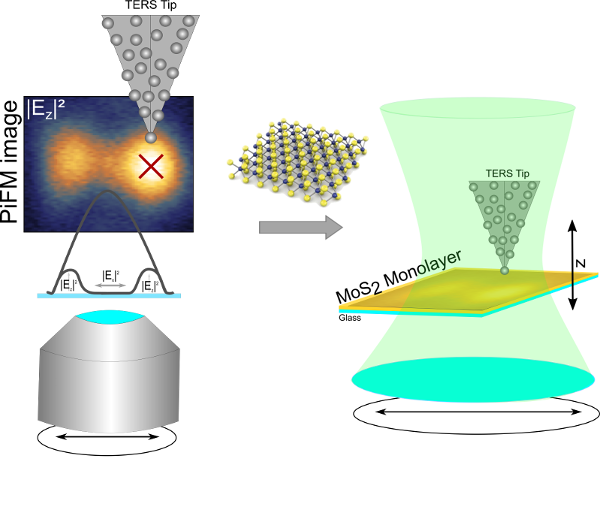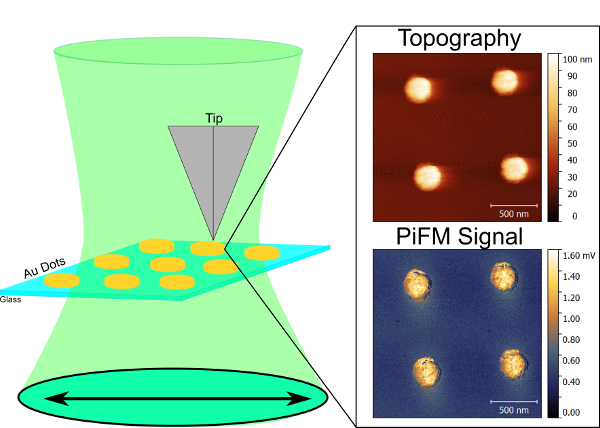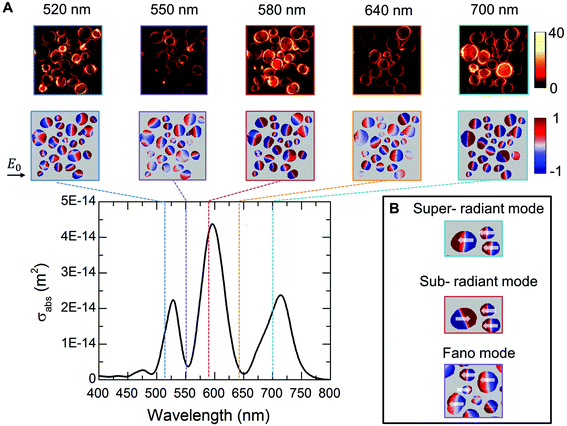Selected Projects in Near-field Optics
 |
Synergy of Photoinduced Force Microscopy and Tip-enhanced Raman SpectroscopyMaximum signal enhancement and collection efficiency is a central issue of practical TERS experiments. Employing high NA optics and carefully considering the input polarization are crucial. Photoinduced Force Microscopy - PiFM - provides a fast and non-destructive methodology to investigate particularly the z-polarization states on a sample surface. Thus, PiFM intrinsically can provide an immediate alignment control to for optimized TERS conditions before and during the experiments.
ReferencesR. Meyer, S. Trautmann, K. Rezaei, A. George, A. Turchanin, V. Deckert, Synergy of Photoinduced Force Microscopy and Tip-Enhanced Raman Spectroscopy—A Correlative Study on MoS2. ACS Photonics, 2019, ASAP. |
 |
Photoinduced Force Mapping of Plasmonic NanostructuresIn this approach we employ PiFM mapping of near-field optical forces on the nanoscale. This provides insight of the overall heterogeneity of the near-field enhancement. We aim to correlate near-field optical force mappings with theoretical models. . |
 |
Numerical simulations of near-field optical response at the nanoscaleWe adapt Finite Element Methods (FEM) to investigate the near-field optical interaction of dielectric/plasmonic materials.[1] We can simulate complex and realistic structures parametrized from e.g. SEM experiments from the micro down to atomic scale.[2]
ReferencesS. Trautmann, M. Richard-Lacroix, A. Dathe, H. Schneidewind, J. Dellith, W. Fritzsche, V. Deckert, Plasmon response evaluation based on image-derived arbitrary nanostructures. Nanoscale, 2018, 10, 216, 9830. S. Trautmann, J. Aizpurua, I. Götz, A. Undisz, J. Dellith, H. Schneidewind, M. Rettenmayr, V. Deckert, A classical description of subnanometer resolution by atomic features in metallic structures. Nanoscale, 2017, 9, 1, 391. |